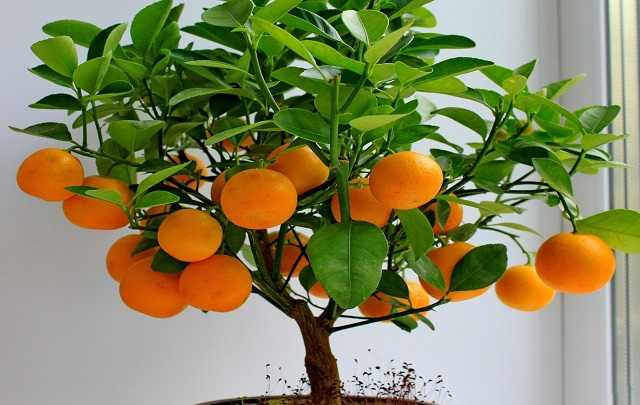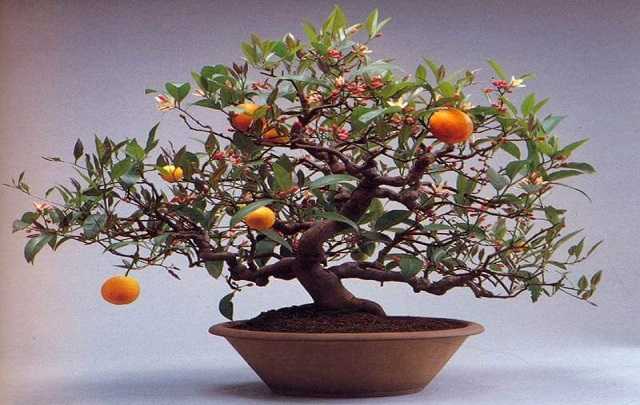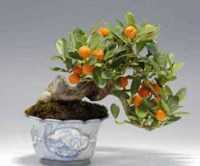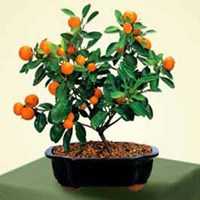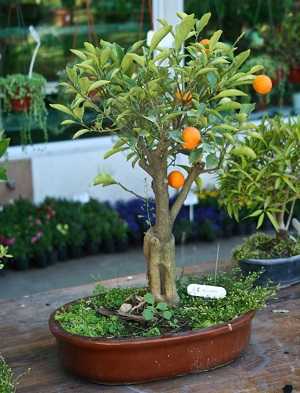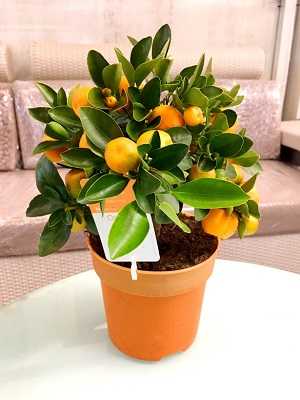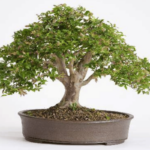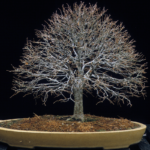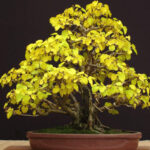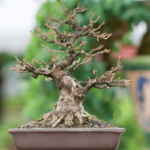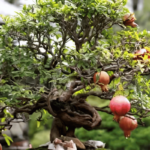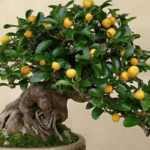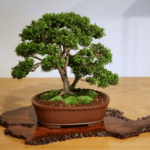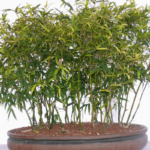The orange bonsai is one of the most interesting types of bonsai to have at home.
This is because these trees not only produce fruits but also generate various fragrant flowers almost year-round.
This bonsai is primarily made from Calamondin.
Calamondin has very green leaves, and its flowers are white with a pleasant fragrance.
The flowers and fruits appear almost together; the fruit is initially dark green but matures and turns orange over time.
These small orange trees usually have the size of a golf ball and are edible.
Continue reading this article to learn how to make and cultivate the orange bonsai.
How to Make an Orange Bonsai
To make this bonsai, the first thing you need to obtain is Calamondin seeds.
But be careful, these seeds should come from a healthy tree to avoid future problems.
Below is the step-by-step guide to making the orange bonsai.
- Obtain Calamondin seeds.
- Remove all pulp from the seeds.
- Plant them at a depth twice their size.
- Cultivate them until they are 10 centimeters (4 inches) tall.
- Remove the plants from the soil.
- Trim the roots to turn it into a bonsai.
- Prune the tree to achieve the desired style.
- Replant them in a specific bonsai pot.
In addition to these steps, there are also some precautions you should take.
For example, when cultivating your orange seeds, ensure that the soil temperature is between 20°C and 30°C (68°F and 86°F).
This is the temperature range in which Calamondin develops best.
Cultivation
To learn how to care for orange bonsais, follow our tips.
Cultivating the orange bonsai is usually done outdoors.
This is one of the simplest bonsais to cultivate, especially if you live in regions where temperatures are warm or moderate.
So if you are a beginner, the orange bonsai, just like the bamboo bonsai, is a great option to grow.
Here are some tips for caring for this plant:
Soil
Let’s start with a factor that can greatly affect your cultivation: the soil.
Like the majority of bonsais, orange trees prefer soil with good drainage and rich in nutrients.
In addition to good drainage and nutrients, aim to provide the following requirements for your bonsai:
- Ensure that your soil is not excessive in acidity or alkalinity. The ideal pH range is between 5 and 8.
- Place some rocks at the bottom to improve soil drainage.
Temperature
Temperature is the simplest factor for this bonsai.
Orange trees are very resistant to various temperatures, withstanding even temperatures as low as 10°C (50°F).
However, if the temperature drops below 10°C (50°F), bring your bonsai indoors.
Very low temperatures can hinder the growth of this plant.
Therefore, ensure that it is exposed to temperatures between 13°C and 32°C (55°F to 90°F).
If the temperature exceeds 32°C (90°F), avoid exposing the orange tree to direct sunlight during the hottest hours of the day.
Read too:
- Mulberry Bonsai – How to Care in 7 Steps (With Photos)
- Pomegranate Bonsai – How to Care in 6 Simple Steps
- Jabuticaba Bonsai – Care to Have Fruits
- Boxwood Bonsai (Buxus) – Step-by-Step Care Guide
- Lemon Bonsai – Discover How to Easily Cultivate Them
Lighting
Lighting is closely related to temperature.
If the temperature you are providing for your orange bonsai is incorrect, the lighting is likely to be incorrect as well.
To provide optimal lighting for your plant, follow the tips below:
- Intense heat: Sunlight in the morning and afternoon, but avoid direct sunlight at noon.
- Average or cool temperature: Provide light throughout the day.
Repotting
Repotting for bonsais occurs when your tree has outgrown its current pot.
This usually happens every 3 to 4 years, but I recommend checking your plant’s roots every year.
You should repot your orange tree during spring or summer, as this is when the climate supports its initial growth.
If your bonsai starts yellowing its leaves after repotting, it may be stressed.
If this happens, be patient, as it will likely recover over time.
To learn more about what can cause your bonsai to turn yellow, dry, or lose its leaves, see this article.
Pot
Before planting or repotting your orange bonsai, you should choose the pot you will use.
And in almost all bonsais, the choice is the same: a small pot with a wide and shallow mouth. This prevents the roots from growing too much.
As for the shape, you can choose whichever suits you best.
Options include circular, rectangular, or oval.
Pruning
To learn how to prune your orange bonsai, watch the video above.
But remember that pruning orange trees is a bit different.
You will not remove the shoots as they can become fruits in the future.
In addition, you should remove all fruits present in early autumn, as they will consume a lot of your plant’s energy.
Watering
Watering is one of the most important requirements for this bonsai.
Orange trees are plants that love water, but beware, they do not like to be waterlogged.
Basically, you will water the plant when the substrate dries out.
On average, you will water your plant:
- Every 2 or 3 days in winter and colder periods.
- 1 or 2 times a day during warmer days.
Be very careful not to overwater and cause root rot in your bonsai.
Fertilization
Fertilization is a process that should be carried out frequently in bonsais.
Because they are not in their natural environment, bonsais cannot obtain nutrients on their own.
In the case of oranges, fertilization should occur every 15 to 30 days using a special bonsai fertilizer.
Preferably, use liquid fertilizers and dilute them to half the recommended strength on the packaging.
Pests
Finally, let’s discuss pests that can attack this plant.
Being a fruit-bearing tree, oranges attract many insects, especially:
- Mites
- Weevils
- Scale insects
- Leaf miners
- Ants
However, be aware that these pests are more likely to appear if your plant is placed in an area with insufficient light.
If you want to learn how to combat these and other pests, see the article on pests and diseases in bonsais.
Conclusion
This completes the comprehensive guide on how to create a bonsai of the Calamondin orange species.
There are also other orange tree species, such as kinzu and kinkan, where this is possible.
Now it’s up to you; leave your comment below and share this article on your social networks.

